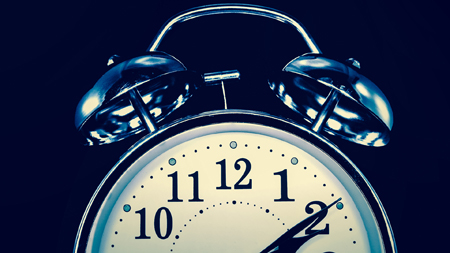
Asleep Somewhere New, One Brain Hemisphere Keeps Watch
PROVIDENCE, RI; April 21, 2016—People who go to bed wary of potential danger sometimes pledge to sleep "with one eye open." A new Brown University study finds that isn't too far off. On the first night in a new place, the research suggests, one brain hemisphere remains more awake than the other during deep sleep, apparently in a state of readiness for trouble.
The study in Current Biology explains what underlies the "first-night effect," a phenomenon that poses an inconvenience to business travelers and sleep researchers alike. Sleep is often noticeably worse during the first night in, say, a hotel or a sleep lab. In the latter context, researchers usually have to build an "adaptation night" into their studies to do their experiments. This time around, the team at Brown investigated the first-night effect, rather than factoring it out.
"In Japan they say, 'if you change your pillow, you can't sleep,'" said corresponding author Yuka Sasaki, research associate professor of cognitive linguistic and psychological sciences at Brown. "You don't sleep very well in a new place. We all know about it."
Sasaki and lead author Masako Tamaki wanted to figure out why. Over the course of three experiments their team used several methods to precisely measure brain activity during two nights of slumber, a week apart, among a total of 35 volunteers. They consistently found that on the first night in the lab, a particular network in the left hemisphere remained more active than in the right hemisphere, specifically during a deep sleep phase known as "slow-wave" sleep. When the researchers stimulated the left hemisphere with irregular beeping sounds (played in the right ear), that prompted a significantly greater likelihood of waking, and faster action upon waking, than if sounds were played in to the left ear to stimulate the right hemisphere.
In other sleep phases and three other networks tested on the first night, there was no difference in alertness or activity in either hemisphere. On the second night of sleep there was no significant difference between left and right hemispheres even in the "default-mode network" of the left hemisphere, which does make a difference on the first night. The testing, in other words, pinpointed a first-night-only effect specifically in the default-mode network of the left hemisphere during the slow-wave phase.
"To our best knowledge, regional asymmetric slow-wave activity associated with the first-night effect has never been reported in humans," the authors wrote.
To make the novel findings, the researchers used electroencephalography, magnetoencephelography, and magnetic resonance imaging to make unusually high-resolution and sensitive measurements with wide brain coverage.
Despite all that instrumentation, the volunteers did not report any unusual discomfort or anxiety in surveys. They were all screened for general mental health before enrollment in the research to ensure their typical sleep was likely to be normal.
Though the study evidence appears to document and explain the first-night effect, it doesn't answer all the questions about it, Sasaki acknowledged. The researchers only measured the first slow-wave sleep phase, for example. Therefore they don't know whether the left hemisphere keeps watch all night, or works in shifts with the right later in the night.
"It is possible that that the surveillance hemisphere may alternate," Sasaki said.
It's also not clear whether the default-mode network is a lonely watchman. In its day job, which some researchers associate with mind-wandering and daydreaming, it tends to keep running when the brain is otherwise fairly idle. There is evidence from prior studies that it remains more connected to other brain networks than most others during sleep. But because the researchers only measured four networks, they aren't sure what others the default-mode network may work with.
Finally, Sasaki said it's not known yet why the brain only maintains an alert state in just one hemisphere - whether it's always the left or in alternation with the right. There are many examples among animals, however, of hemispheric asymmetry during slow-wave sleep. Marine mammals exhibit it, Sasaki said, presumably because they regularly need to resurface to breathe, even during sleep.
Now it's been found in humans as a first-night phenomenon.
"The present study has demonstrated that when we are in a novel environment, inter-hemispheric asymmetry occurs in regional slow-wave activity, vigilance and responsiveness, as a night watch to protect ourselves," the study concludes.
DAVID ORENSTEIN
ARTICLE:
“Night Watch in One Brain Hemisphere during Sleep Associated with the First-Night Effect in Humans,” Masako Tamaki, Ji Won Bang, Takeo Watanabe, Yuka Sasaki
Current Biology, Published online: April 21, 2016.
